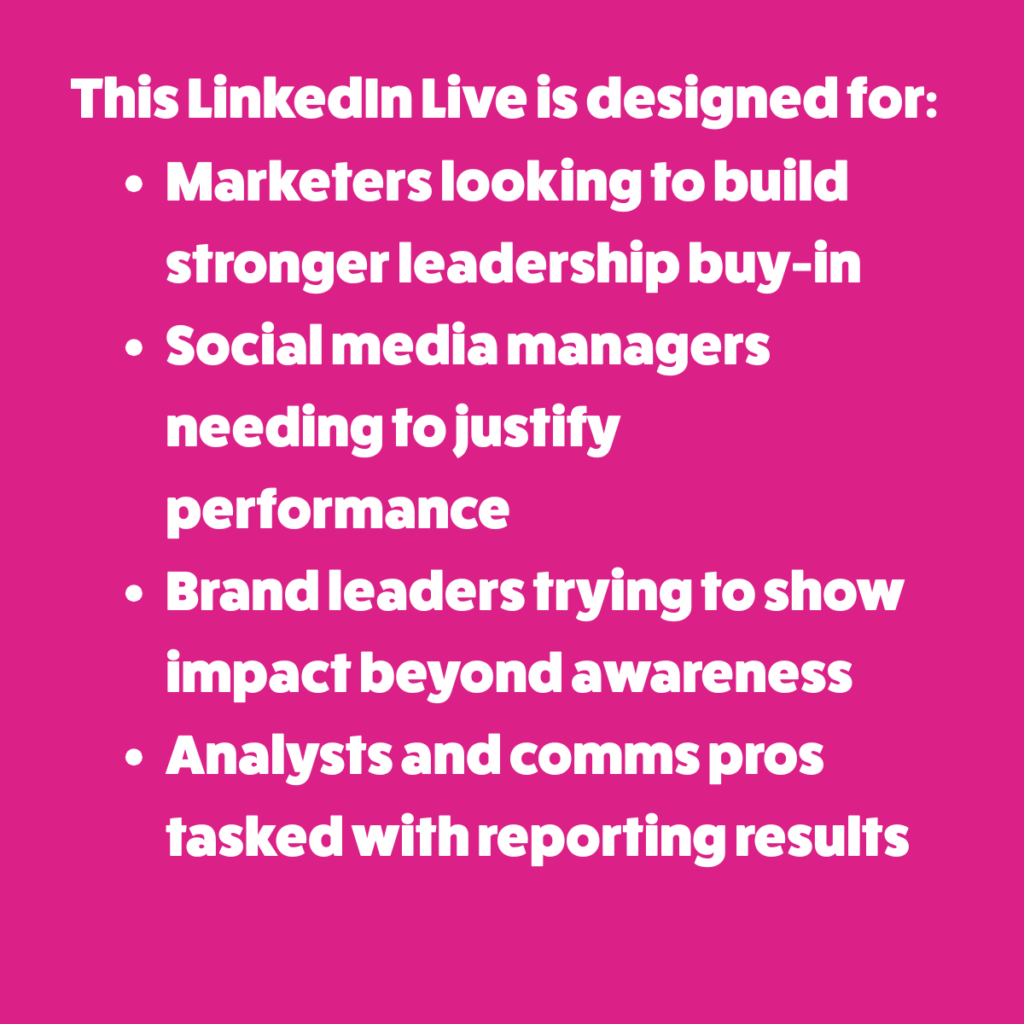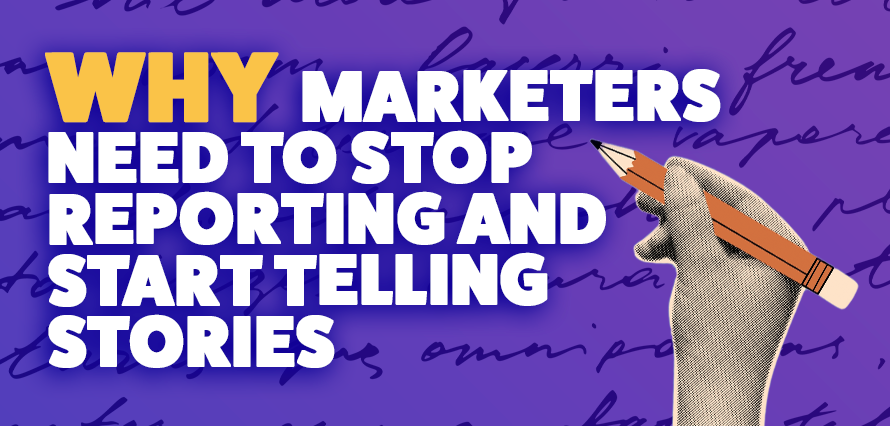April 15, 2025
We’ve all been there. You’ve pulled a marketing campaign apart, wrangled the data, triple-checked your charts, and packaged it into a tidy little deck.
You hit your KPIs. You even exceeded your objectives. But in the boardroom? Silence. A polite nod. Maybe a vague comment about the branding.
Because data doesn’t speak for itself. And in marketing, if you don’t tell the story, your message doesn’t land.
That’s why I’m hosting a LinkedIn Live on 29th April with Barnaby Barron, Head of EMEA Analysis at Brandwatch. We’re talking about a skill every marketer needs in 2025: data storytelling.
What is data storytelling? Data storytelling is the practice of turning data into a clear, persuasive narrative. It bridges the gap between analysis and action. When done right, it gives context, builds trust, and persuades stakeholders. And when it’s missing? Reports get ignored. Budgets get cut. Wins go uncelebrated.
there’s more useful background to storytelling on our blog with an approach all set out for you
This Live isn’t another webinar about metrics or dashboards. It’s about how to make sure your marketing data drives decisions and gets results.
We need to talk about this. Right now, marketers struggle to prove ROI. 87% of marketers say they struggle to make sense of the data they collect (MarketingProfs, 2024).
Only 27% of B2B marketers are currently able to measure ROI from their social media ads (eMarketer, 2024).
Just 51% of social practitioners believe their executive team truly understands social’s business impact (Sprout Social, 2024).
These stats tell us something important: marketers are collecting data, but they’re not telling stories with it. That’s the piece we need to fix.
We need to understand why data storytelling matters for CFO and leadership buy-in. When leadership doesn’t see the business value of your work, you don’t get the budget, the support, or the seat at the table.
Data stories help:
- connect marketing activity to business outcomes
- communicate performance beyond vanity metrics
- shift the perception of brand from cost to value driver
- build credibility and trust with the c-suite
We’ll show you how to use narratives, visuals, and structure to make your data resonate.

Barnaby and I will walk through how to:
- plan the stories before the campaign starts
- use metaphors, analogies, and real-world context
- stop relying on post-hoc analysis for awards or investor decks
- make insights stick with decision-makers and non-marketers
Whether you’re reporting to a CFO, justifying a creative strategy, or trying to explain the value of community management to the board, this session is for you.
Register for our LinkedIn live event on Tuesday 29th April at 1pm.
We’ll share practical advice on telling stories with marketing data, audience insight, social performance, and ROI.
Data storytelling isn’t wasteful. It’s how you prove value and grow influence. Because data isn’t the problem. Bad storytelling is.
